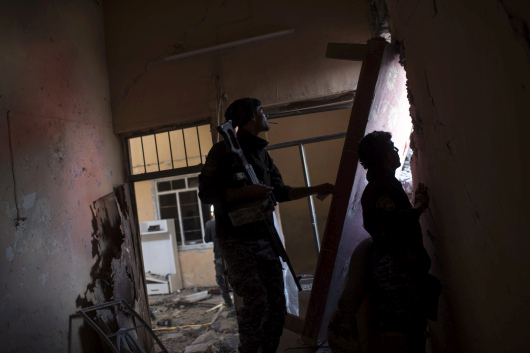ISIS Upbeat after New Tactic Slows US Military Assault on Mosul
As US and Iraqi forces batter the Islamists holding out in the Old City of Mosul month after month, their spokesmen continue to insist that ISIS is falling back and on the point of total defeat.
That depiction, however, does not match the sense prevailing in the ISIS command. Its strategists, former officers of Iraq’s Saddam Hussein regime and Baath party, are, in contrast, highly upbeat. They believe they have found a convincing tactical answer to the American push for crushing them in Mosul, are nowhere near defeat and Abu Bakr Al-Baghdadi’s caliphate is far from collapse.
DEBKA Weekly’s intelligence and counterterrorism sources offer six reasons for the jihadists’ confidence which the Mosul battle has solidified:
1. The numbers of ISIS fighters still trapped in the Old City of Mosul is seriously underestimated as 300-400 by American and Iraqi military sources. The true figure still fighting there is ten times larger – 3,000-4,000.
2. Neither the American nor the Iraqi commands have worked out how to counter the ISIS forces’ device of connecting tunnels running under buildings, which are accessed through holes which they have blown through the walls of attached buildings. The jihadists can therefore move around between battlegrounds unobserved.
3. The only force able to combat ISIS tactics is the Iraqi Gold Division, the only elite force available to the US-Iraqi command. It is not however large enough to fight in more than one arena at once and is, moreover, too slow-moving to overwhelm the swift, invisible ISIS fighters. Most other Iraqi army units have been withdrawn from the Mosul front after taking casualties in unacceptable numbers.
4. ISIS has given up the strategy of defending large urban areas, pursued early in its campaign of conquest in such places as Ramadi, Tikrit and Fallujah – and the start of its defense of Mosul. Instead, their commanders have split them up into small detachments of no more than 10-15 fighters each for commando raids against their adversaries. These detachments are supported by a large group employed well behind the front lines in running assembly lines of booby-trapped cars for delivery to the commando detachments.
Each is provided with more than a dozen explosive cars for release against Iraqi and US troops for maximum losses.
5. The effect of this tactic has been disastrous. Capable of penetrating as far as 10 km inside Iraqi lines, these deadly vehicles have managed to slow the US-Iraqi advance and, in some places, brought it to a halt. The method has won the title of “crust mobile defense” from American commanders in Syria and Iraq
In short, the Mosul offensive, estimated to last a few months, is going into its eighth month with no end in sight.
6. Cock-a-hoop over the success of their tactics – essentially a reversion to the methods that come most naturally to Islamist terrorists – ISIS chiefs are transposing it to the Raqqa arena in Syria. They have already begun relocating their north Syrian command centers to the eastern Deir ez-Zor region and Euphrates Valley, which straddles the Syrian-Iraqi border.
The terrorist organization has selected the small desert town of Al-Mayadin east of Deir ez-Zor as the new seat for its central command, mainly because of its isolation. Only five roads access the town, most of them not fit for vehicular traffic and so any approaching enemy is quickly exposed.
ISIS is now planning to post its “crust mobile defense system” squads along the 170km of road linking Al Mayadin to Raqqa.


